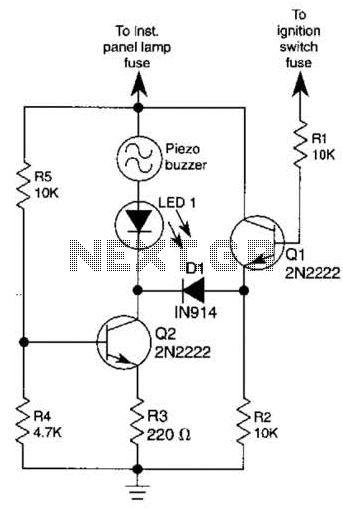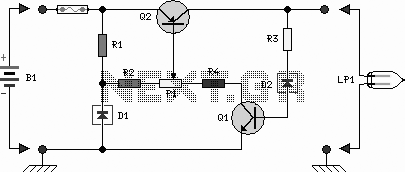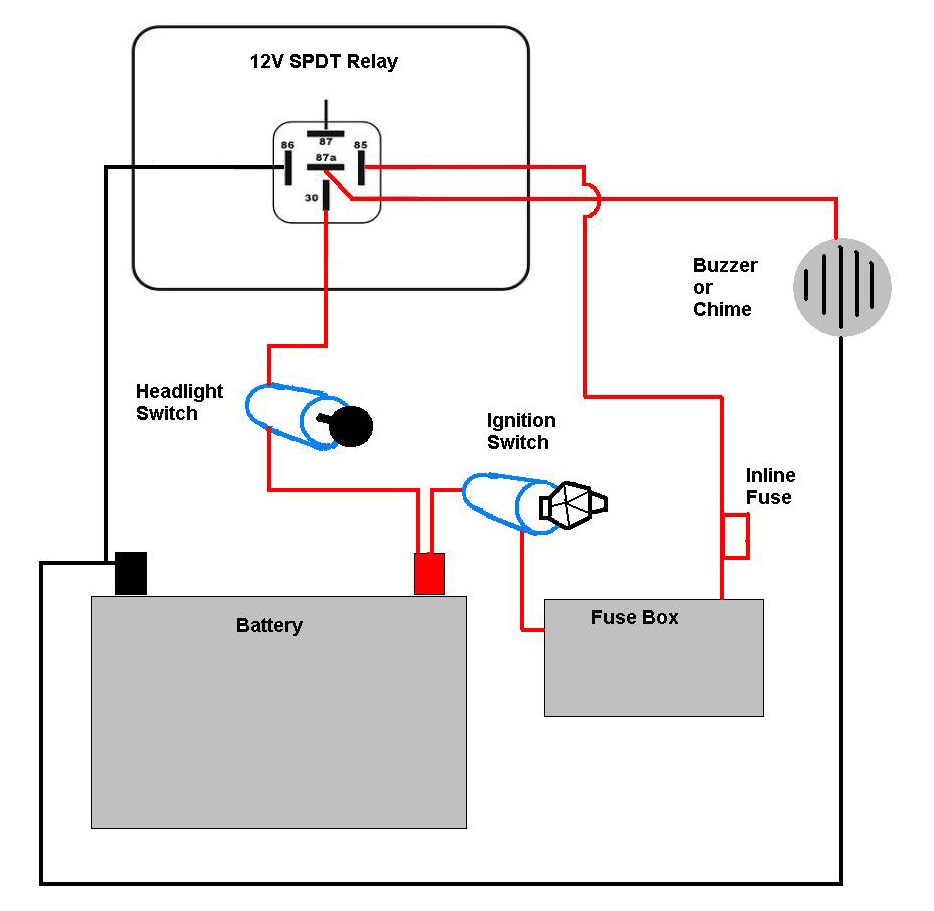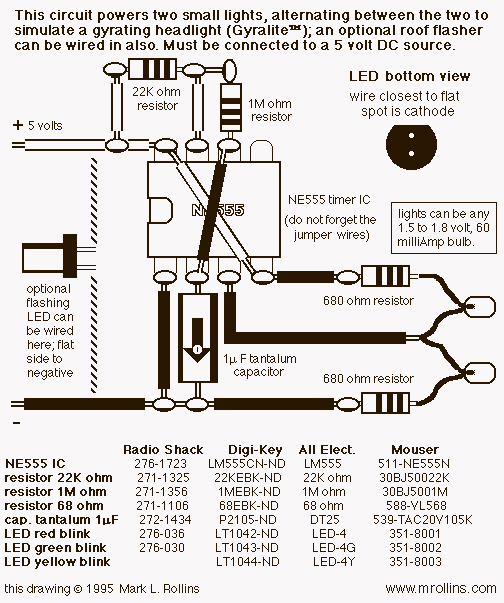
Headlight Flashers
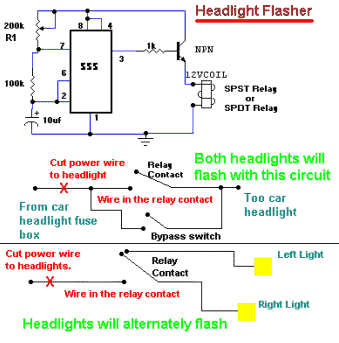
A compact and intriguing circuit designed to flash automotive headlights. The circuit diagram is based on the well-known NE555 timer circuit.
This circuit utilizes the NE555 timer in astable mode to create a flashing effect for automotive headlights. The primary components include the NE555 timer IC, resistors, capacitors, and a power supply, typically sourced from the vehicle's battery.
In the astable configuration, the NE555 continuously switches between its high and low states, generating a square wave output. This output is used to control a relay or a transistor that, in turn, switches the headlights on and off at a predetermined frequency. The flashing rate can be adjusted by varying the resistor and capacitor values connected to the timer.
For instance, using a larger capacitor or increasing the resistance in the timing circuit will slow down the flashing rate, while smaller values will increase the frequency. The circuit can be powered directly from the vehicle's 12V battery, making it suitable for automotive applications.
Additional components may include diodes for protection against back EMF generated by the relay, ensuring the longevity of the circuit. Proper heat dissipation measures should also be considered if the circuit is expected to operate for extended periods.
This flashing headlight circuit can enhance vehicle visibility and serve as a signaling device, contributing to road safety. The simplicity of the NE555 timer circuit makes it an ideal choice for both novice and experienced electronics enthusiasts looking to implement a practical automotive application.Small and interesting circuit that flashes your head lights. Automotive, head lights, circuit diagram. Built around famous NE555 timer circuit.. 🔗 External reference
This circuit utilizes the NE555 timer in astable mode to create a flashing effect for automotive headlights. The primary components include the NE555 timer IC, resistors, capacitors, and a power supply, typically sourced from the vehicle's battery.
In the astable configuration, the NE555 continuously switches between its high and low states, generating a square wave output. This output is used to control a relay or a transistor that, in turn, switches the headlights on and off at a predetermined frequency. The flashing rate can be adjusted by varying the resistor and capacitor values connected to the timer.
For instance, using a larger capacitor or increasing the resistance in the timing circuit will slow down the flashing rate, while smaller values will increase the frequency. The circuit can be powered directly from the vehicle's 12V battery, making it suitable for automotive applications.
Additional components may include diodes for protection against back EMF generated by the relay, ensuring the longevity of the circuit. Proper heat dissipation measures should also be considered if the circuit is expected to operate for extended periods.
This flashing headlight circuit can enhance vehicle visibility and serve as a signaling device, contributing to road safety. The simplicity of the NE555 timer circuit makes it an ideal choice for both novice and experienced electronics enthusiasts looking to implement a practical automotive application.Small and interesting circuit that flashes your head lights. Automotive, head lights, circuit diagram. Built around famous NE555 timer circuit.. 🔗 External reference
